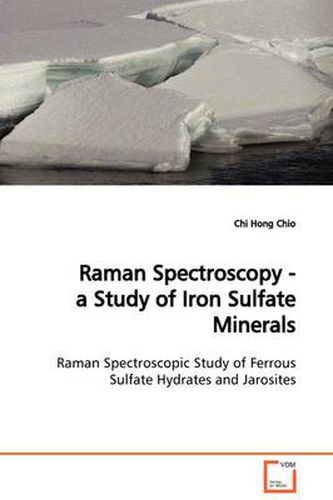Readings Newsletter
Become a Readings Member to make your shopping experience even easier.
Sign in or sign up for free!
You’re not far away from qualifying for FREE standard shipping within Australia
You’ve qualified for FREE standard shipping within Australia
The cart is loading…






This title is printed to order. This book may have been self-published. If so, we cannot guarantee the quality of the content. In the main most books will have gone through the editing process however some may not. We therefore suggest that you be aware of this before ordering this book. If in doubt check either the author or publisher’s details as we are unable to accept any returns unless they are faulty. Please contact us if you have any questions.
Raman spectroscopy has been used to study hydrous sulfate minerals of importance to planetary science. These minerals are the mono-, tetra- and heptahydrates of ferrous sulfate and minerals of the jarosite group including Na-, K- and NH4-jarosite. Each mineral has its characteristic spectrum that can be used for remote identification on planetary surfaces and is important in the study of past geological environment. Effects from the waters of crystallization and hydrogen bonding on the Raman spectra of ferrous sulfate hydrates have been studied. Structural changes and phase transitions in these hydrates under cryogenic temperatures and high pressures have been studied. In the study of jarosites, the variations observed in the Raman spectra at room temperature and cryogenic temperatures are discussed in terms of changes in unit cell dimensions influenced by different interlayer cations. The Raman and IR spectra of K-jarosite after heating to 230 and 400 C showed the presence of yavapaiite, which was also detected in the Raman spectra of K-jarosite at room temperature under reduced water vapor pressure in conditions that can be found on the surface of Mars.
$9.00 standard shipping within Australia
FREE standard shipping within Australia for orders over $100.00
Express & International shipping calculated at checkout
This title is printed to order. This book may have been self-published. If so, we cannot guarantee the quality of the content. In the main most books will have gone through the editing process however some may not. We therefore suggest that you be aware of this before ordering this book. If in doubt check either the author or publisher’s details as we are unable to accept any returns unless they are faulty. Please contact us if you have any questions.
Raman spectroscopy has been used to study hydrous sulfate minerals of importance to planetary science. These minerals are the mono-, tetra- and heptahydrates of ferrous sulfate and minerals of the jarosite group including Na-, K- and NH4-jarosite. Each mineral has its characteristic spectrum that can be used for remote identification on planetary surfaces and is important in the study of past geological environment. Effects from the waters of crystallization and hydrogen bonding on the Raman spectra of ferrous sulfate hydrates have been studied. Structural changes and phase transitions in these hydrates under cryogenic temperatures and high pressures have been studied. In the study of jarosites, the variations observed in the Raman spectra at room temperature and cryogenic temperatures are discussed in terms of changes in unit cell dimensions influenced by different interlayer cations. The Raman and IR spectra of K-jarosite after heating to 230 and 400 C showed the presence of yavapaiite, which was also detected in the Raman spectra of K-jarosite at room temperature under reduced water vapor pressure in conditions that can be found on the surface of Mars.